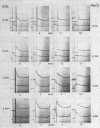Abstract
Onishi, H. (National Research Council, Ottawa, Ontario, Canada), and D. J. Kushner. Mechanism of dissolution of envelopes of the extreme halophile Halobacterium cutirubrum. J. Bacteriol. 91:646–652. 1966.—Envelopes of Halobacterium cutirubrum dissolved rapidly in media of low ionic strength. Heating partially inhibited breakdown, probably because of nonspecific protein coagulation rather than inactivation of a lytic enzyme(s). Dissolution of envelopes in water did not involve splitting of peptide bonds or protein-lipid bonds, or any extensive breakdown of carbohydrate polymers. Dissolution was increased by alcohols and urea, even at high salt concentrations, but was not affected by metabolic inhibitors. Thus, no evidence was found for a dilution-activated lytic enzyme that contributes to envelope breakdown. Cells of H. cutirubrum were stable in 2 m NaCl, but lysis occurred in 2 m KCl or NH4Cl. This lysis did not involve an extensive breakdown of the envelope. No evidence for different sites of Na+, K+, and NH4+ action was obtained from the pattern of release of envelope constituents in different concentrations of these salts. Ultracentrifugation studies showed that adding salts to envelopes that had been dissolved in water led to a nonspecific reaggregation of envelope material. No difference was seen between the effects of KCl and NaCl, except at 3 to 4 m concentrations where KCl caused more aggregation. The preferential effect of Na+ on intact cells is probably due to its ability specifically to prevent leakage rather than to an overall effect on envelope integrity.
Full text
PDF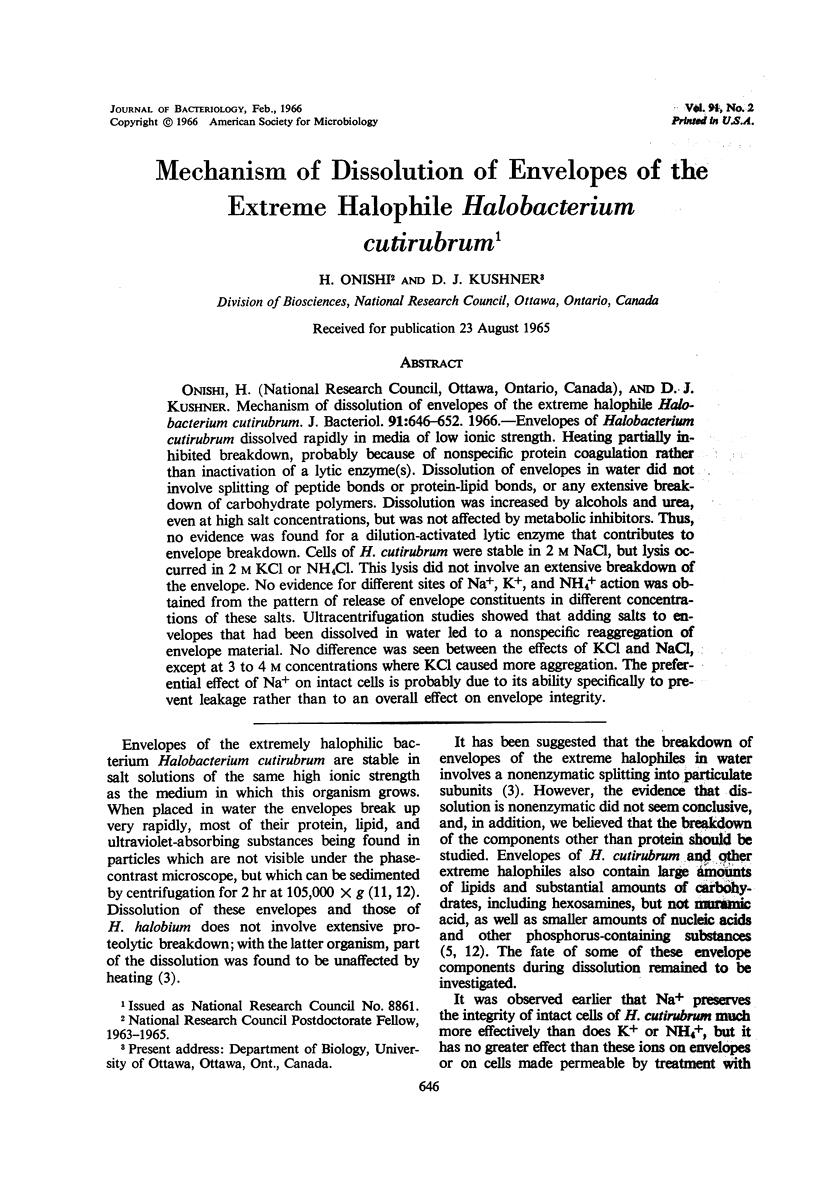
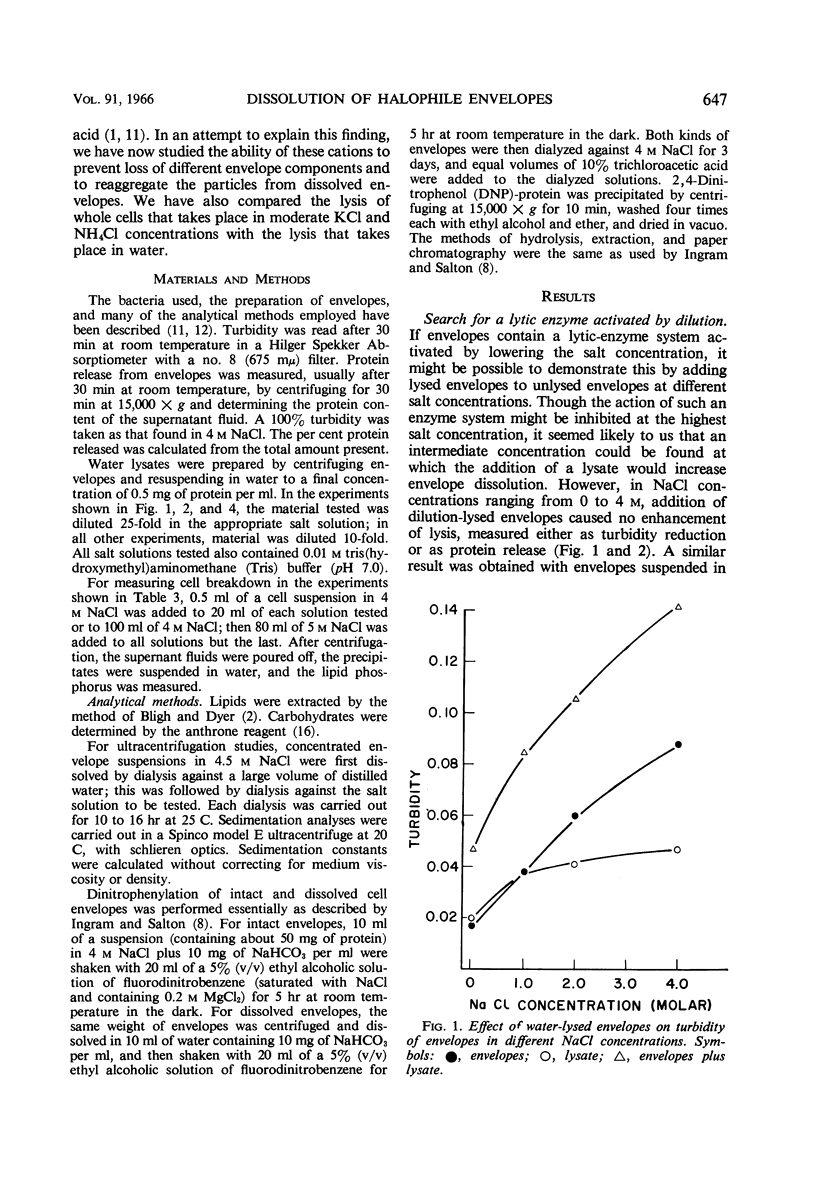
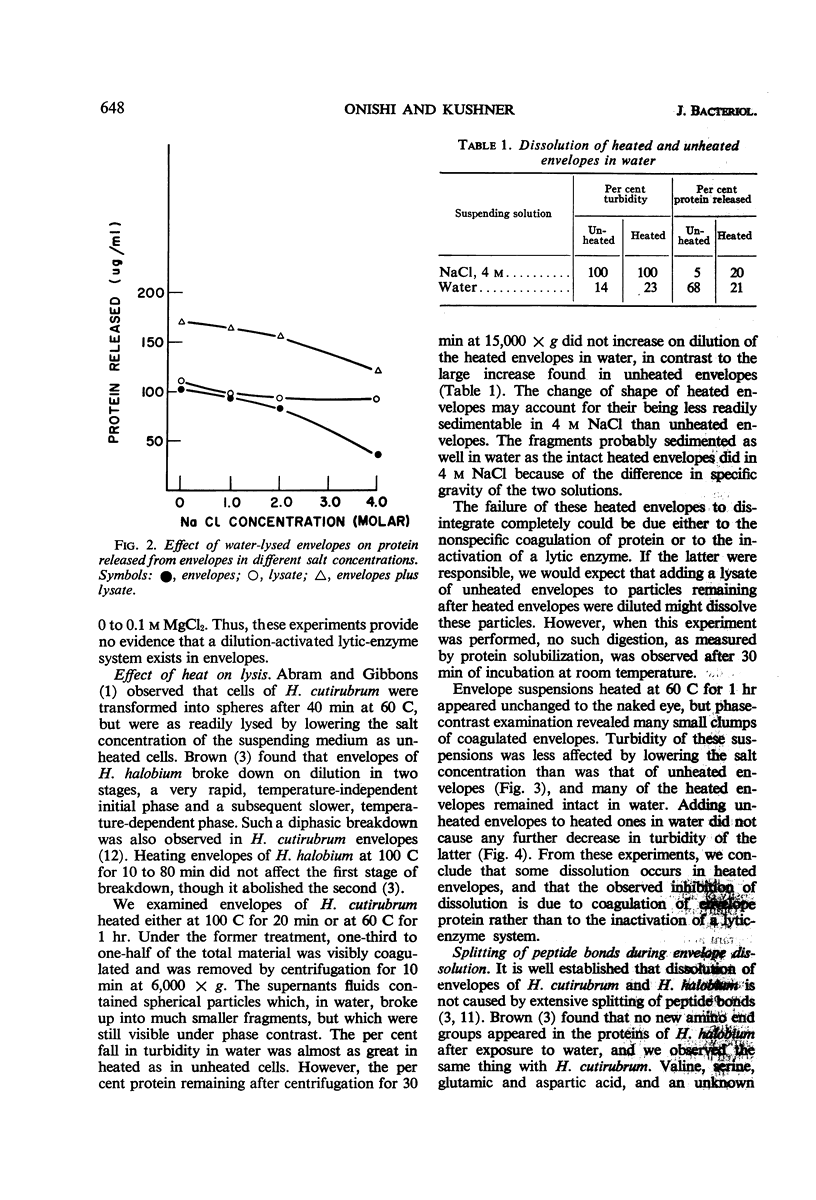
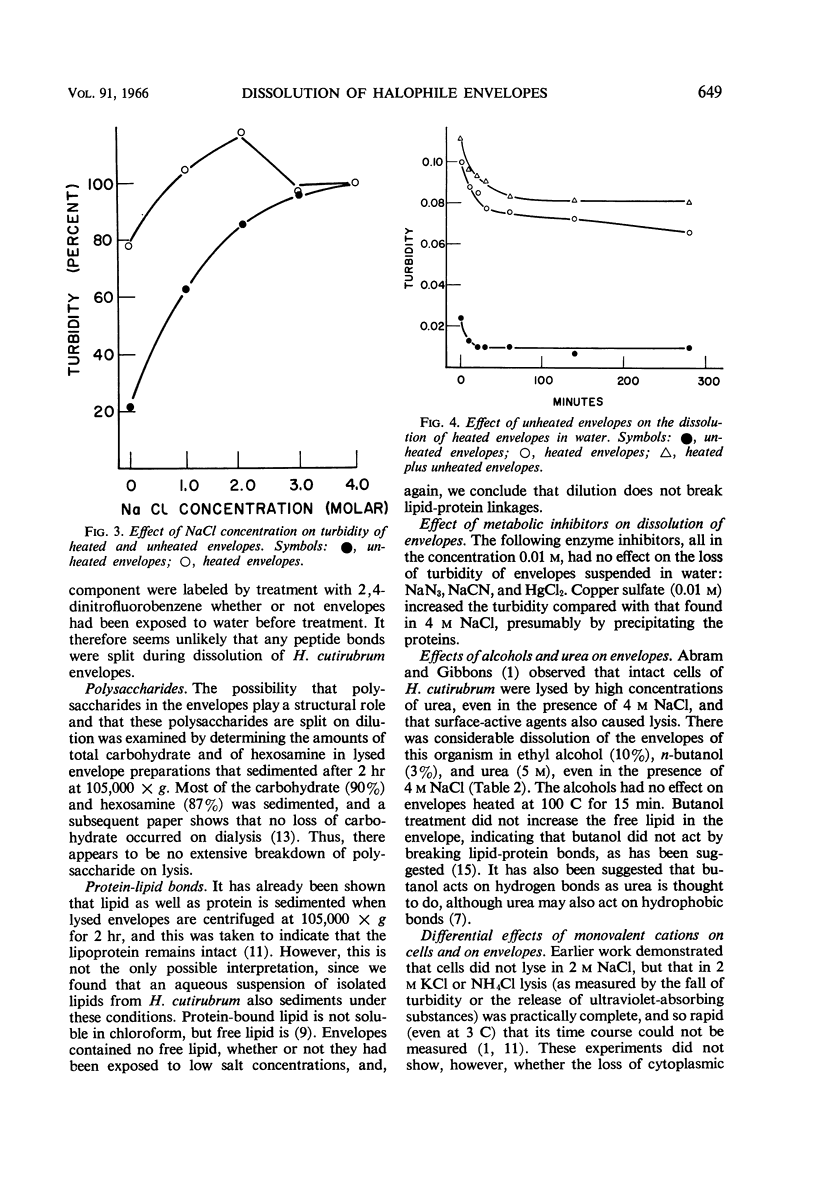
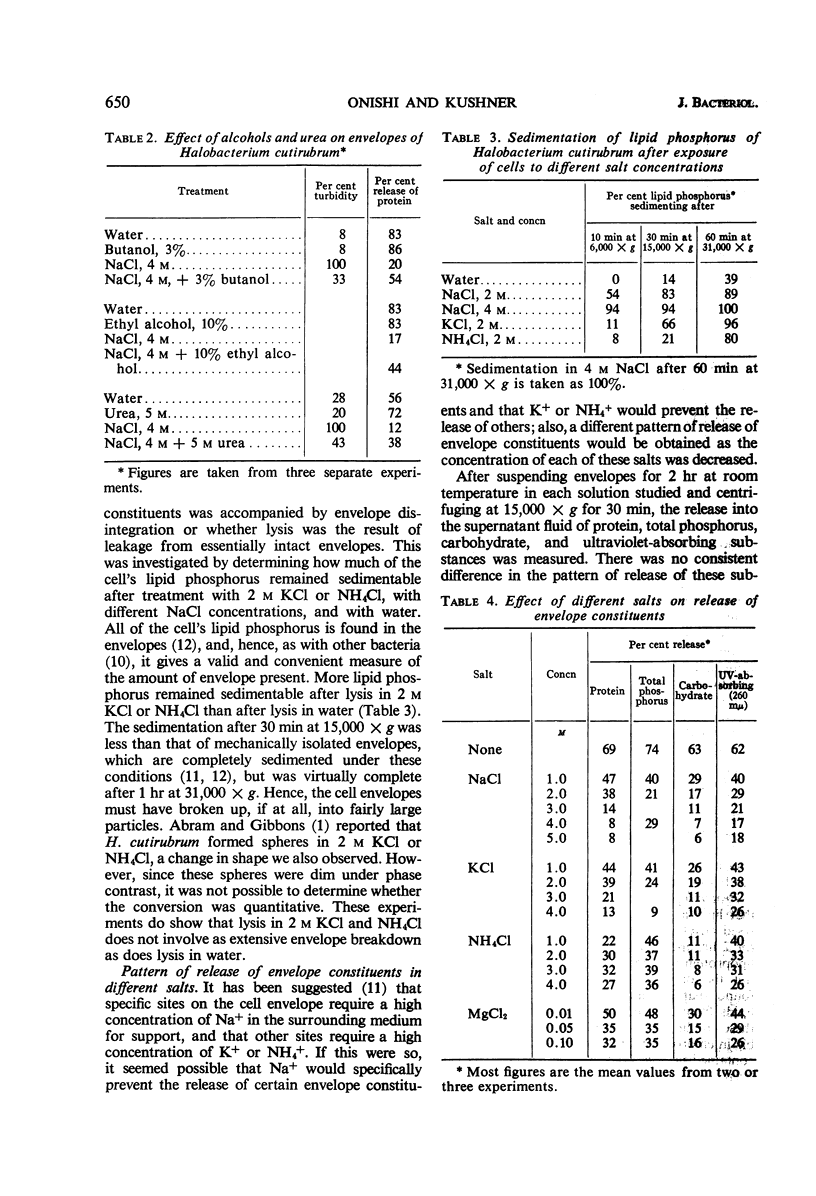
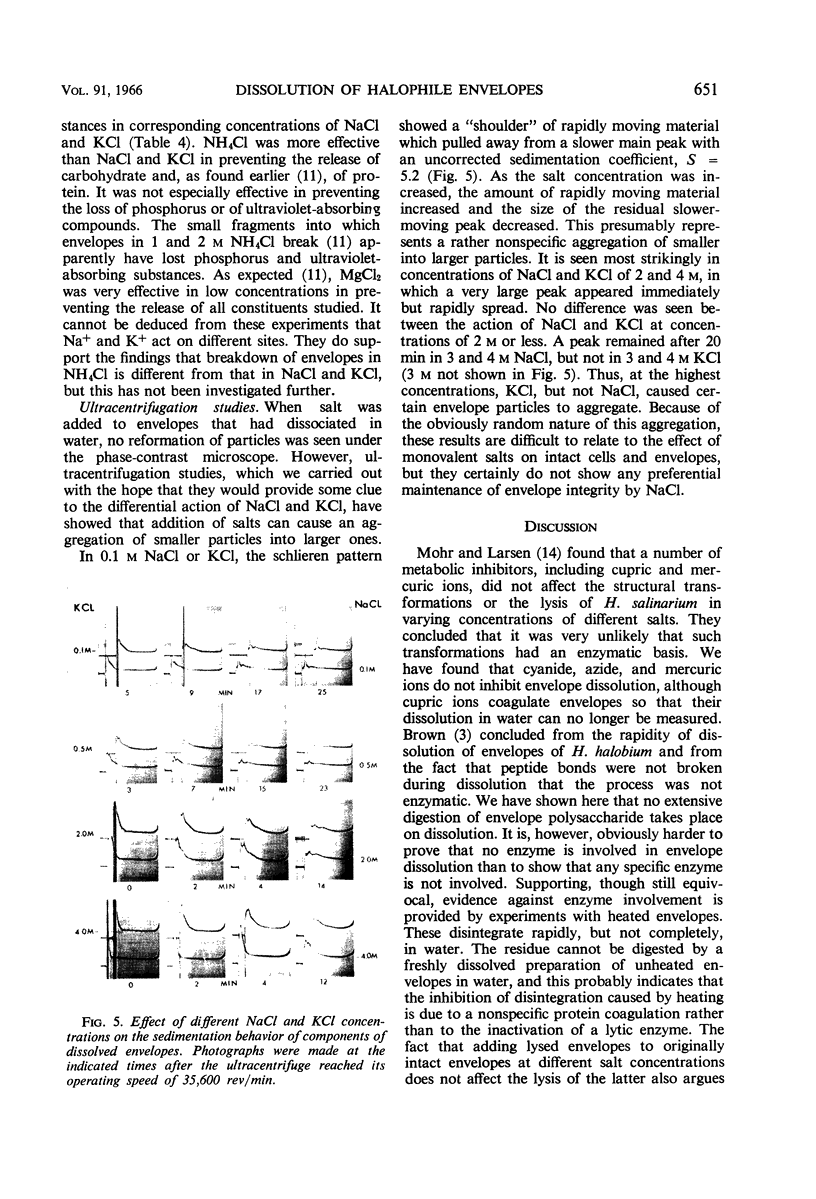
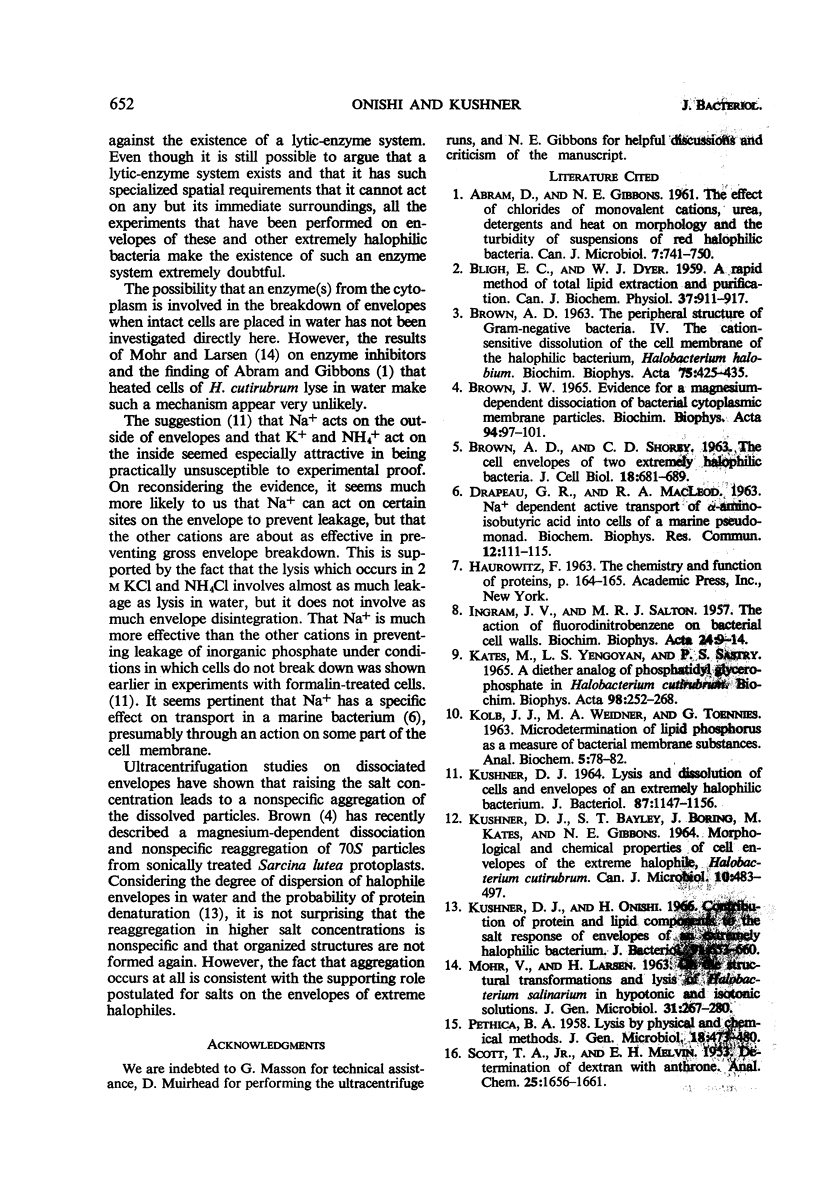
Images in this article
Selected References
These references are in PubMed. This may not be the complete list of references from this article.
- ABRAM D., GIBBONS N. E. The effect of chlorides of monovalent cations, urea, detergents, and heat on morphology and the turbidity of suspensions of red halophilic bacteria. Can J Microbiol. 1961 Oct;7:741–750. doi: 10.1139/m61-088. [DOI] [PubMed] [Google Scholar]
- BLIGH E. G., DYER W. J. A rapid method of total lipid extraction and purification. Can J Biochem Physiol. 1959 Aug;37(8):911–917. doi: 10.1139/o59-099. [DOI] [PubMed] [Google Scholar]
- BROWN A. D., SHOREY C. D. THE CELL ENVELOPES OF TWO EXTREMELY HALOPHILIC BACTERIA. J Cell Biol. 1963 Sep;18:681–689. doi: 10.1083/jcb.18.3.681. [DOI] [PMC free article] [PubMed] [Google Scholar]
- BROWN A. D. THE PERIPHERAL STRUCTURES OF GRAM-NEGATIVE BACTERIA.IV. THE CATION-SENSITIVE DISSOLUTION OF THE CELL MEMBRANE OF THE HALOPHILIC BACTERIUM, HALOBACTERIUM HALOBIUM. Biochim Biophys Acta. 1963 Nov 29;75:425–435. doi: 10.1016/0006-3002(63)90630-9. [DOI] [PubMed] [Google Scholar]
- BROWN J. W. EVIDENCE FOR A MAGNESIUM-DEPENDENT DISSOCIATION OF BACTERIAL CYTOPLASTIC MEMBRANE PARTICLES. Biochim Biophys Acta. 1965 Jan 25;94:97–101. doi: 10.1016/0926-6585(65)90012-9. [DOI] [PubMed] [Google Scholar]
- KOLB J. J., WEIDNER M. A., TOENNIES G. Microdetermination of lipid phosphorus as a measure of bacterial membrane substance. Anal Biochem. 1963 Jan;5:78–82. doi: 10.1016/0003-2697(63)90061-7. [DOI] [PubMed] [Google Scholar]
- KUSHNER D. J., BAYLEY S. T., BORING J., KATES M., GIBBONS N. E. MORPHOLOGICAL AND CHEMICAL PROPERTIES OF CELL ENVELOPES OF THE EXTREME HALOPHILE, HALOBACTERIUM CUTIRUBRUM. Can J Microbiol. 1964 Jun;10:483–497. doi: 10.1139/m64-058. [DOI] [PubMed] [Google Scholar]
- Kushner D. J. Lysis and dissolution of cells and envelopes of an extremely halophilic bacterium. J Bacteriol. 1964 May;87(5):1147–1156. doi: 10.1128/jb.87.5.1147-1156.1964. [DOI] [PMC free article] [PubMed] [Google Scholar]



